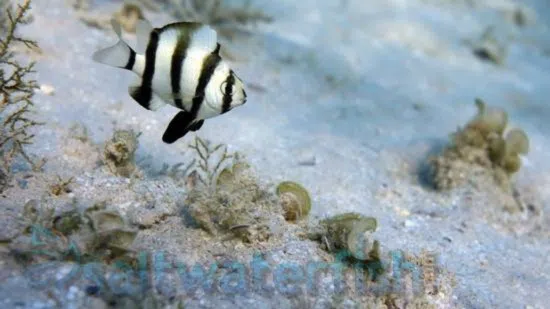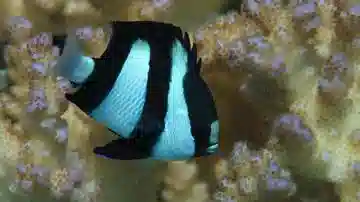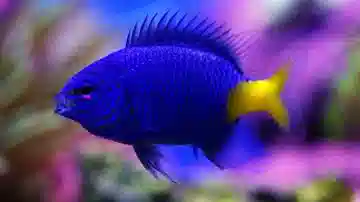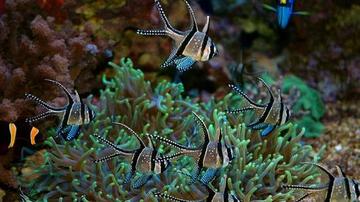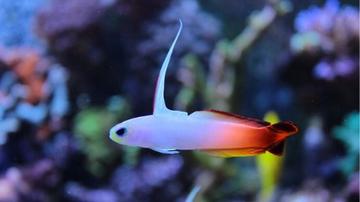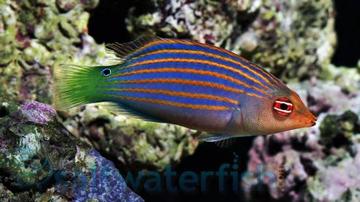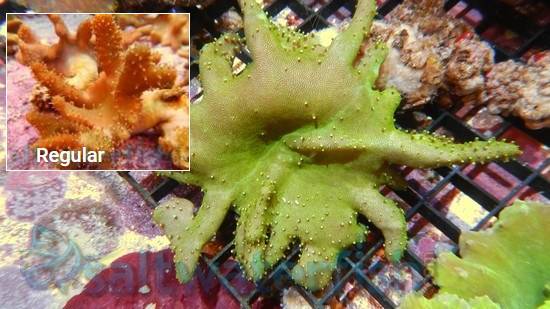Giant Damsel - East Pacific
Microspathodon dorsalis
(1 Reviews)
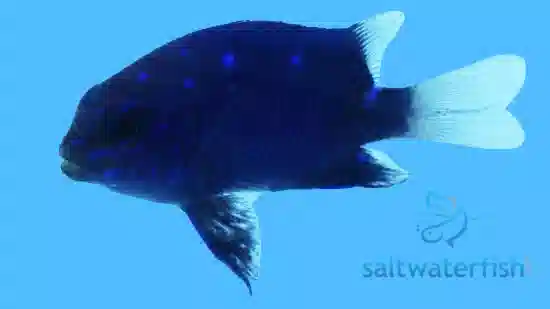
Giant Damsel - East Pacific
Microspathodon dorsalis
(1 Reviews)
{{ item.name }}
Size: {{ item.extra_field_3 }}
${{ getFormattedPrice(item.saleprice) }} ${{ getFormattedPrice(item.price) }}
To join the waiting list, click here
Free Shipping
With
$199.00
or more in Marine Life.
More details...
Giant Damsel - East Pacific Care Facts
| Care Level: | Moderate |
|---|---|
| Temperament: | Aggressive |
| Diet: | Omnivore |
| Reef Safe: | Yes |
| Minimum Tank Size: | 200 gallons |
| Max Size: | 12 inches |
The Giant Damselfish, Microspathodon dorsalis is a rare and unique fish species that is not commonly seen in the trade due to its aggressive nature. It is not recommended in a peaceful community fish in most home aquariums, and should only be housed with other aggressive fishes such as dottybacks, large angelfishes, surgeonfishes, and triggerfishes. It can grow up to 12 inches in length and requires a minimum of a 200 gallon aquarium. They are reef safe but may nip at small crustaceans and macro algae.
This fish has a striking appearance, with the juvenile having a dark blue body and iridescent blue spots, while the adult is blackish blue with white edging on all fins. Like most Dasmelfish the Giant damsel is relatively easy to care for and is not a picky eater. Ensure that you provide a habitat with lots of hiding places and good water movement, and offer a meaty diet several times daily, including brine shrimp and various frozen or fresh meaty foods such as mysis, squid, shrimp, clam, and algae such as spirulina and seaweed.
Giant Damsel - Microspathodon dorsalis
The Giant Damsel (Microspathodon dorsalis) is a fascinating marine species that has captured the attention of saltwater aquarium enthusiasts. Known for its vibrant coloration and exciting behavior, this damselfish has become a sought-after addition to saltwater aquariums. This comprehensive guide will delve into various aspects of keeping the Giant Damsel, covering its habitat, compatibility, tank requirements, and more.
Habitat of the Giant Damsel
The Giant Damsel is primarily found in the Indo-Pacific region, inhabiting coral-rich areas, lagoons, and outer reef slopes. Its natural habitat is characterized by various coral formations, providing ample hiding spaces and shelter. Understanding and replicating this environment is crucial for successfully keeping this species in captivity.
Reef Compatibility of the Giant Damsel
The Giant Damsel is considered reef-safe, making it a suitable choice for aquariums with live coral ecosystems. However, caution should be exercised, especially if introducing the damselfish into a small or newly established reef tank, as it may exhibit territorial behavior.
Size and Lifespan of the Giant Damsel
In captivity, the Giant Damsel can reach a size of approximately six inches. With proper care, these fish can last 5 to 10 years, making them a long-term commitment for dedicated marine enthusiasts.
Diet of the Giant Damsel in Captivity
Feeding the Giant Damsel in captivity is relatively straightforward. They are omnivores and will accept a varied diet, including high-quality flakes, pellets, frozen or live brine shrimp, and mysis shrimp. Offering a diverse diet ensures the nutritional well-being of the fish.
Aquaculture and Availability of the Giant Damsel
The Giant Damsel is not widely aquacultured, and individuals available in the market are typically wild-caught. Despite this, responsible and sustainable sourcing practices can minimize the environmental impact of acquiring these fish for aquariums.
Compatibility of the Giant Damsel with Other Fish and Invertebrates
The Giant Damsel can be compatible with various tankmates. However, caution should be exercised when introducing other damselfish, as they may exhibit territorial aggression. Suitable tankmates include peaceful reef fish such as Clownfish, Anthias, Royal Gramma, and Firefish.
Sexual Dimorphism of the Giant Damsel
Sexual dimorphism in the Giant Damsel is not easily discernible without close examination. However, males may exhibit slightly brighter coloration during the breeding season. In a community tank, the presence of both males and females can add to the natural behavior and dynamics of the aquarium.
Juvenile to Adult Coloration Changes in the Giant Damsel
Juvenile Giant Damsels typically display a vibrant yellow coloration, which may transition to a more subdued blue or green hue as they mature. The color change is a natural part of their development and adds visual interest to the aquarium.
Temperament of the Giant Damsel
While generally considered peaceful, the Giant Damsel can display territorial behavior, especially when establishing territories within the aquarium. Providing ample hiding spaces and a well-structured environment can help mitigate potential aggression.
Tank Requirements of the Giant Damsel
- Minimum Aquarium Size: A tank with a minimum size of 75 gallons is recommended to provide adequate space for the Giant Damsel to establish territories and swim freely.
- Water Conditions: Maintain a stable environment with a pH of 8.1 to 8.4, salinity between 1.023 and 1.025, water temperature between 74°F and 80°F, and moderate water flow to mimic their natural habitat.
Other Common Names for the Giant Damsel
The Giant Damsel may be known by other common names such as the Yellowtail Damselfish or Yellowtail Blue Damselfish.
Five Compatible Tank Mates for the Giant Damsel
- Clownfish (Amphiprion spp.)
- Anthias (Pseudanthias spp.)
- Royal Gramma (Gramma loreto)
- Firefish (Nemateleotris spp.)
- Banggai Cardinalfish (Pterapogon kauderni)
Why Choose Saltwaterfish.com:
Saltwaterfish.com stands out as a reliable source for obtaining the Giant Damsel due to its commitment to sustainable and ethical practices. They prioritize the well-being of the fish, offering a diverse selection of marine species with transparent information on sourcing and handling. Purchasing from Saltwaterfish.com ensures that enthusiasts receive healthy specimens while contributing to the responsible management of marine resources.
In conclusion, the Giant Damsel is an engaging addition to saltwater aquariums, providing enthusiasts a captivating glimpse into the marine world. With proper care and attention to its specific needs, this damselfish can thrive and contribute to the beauty and diversity of a well-maintained marine aquarium.
Reviewed by: Rasheed Wilson on Nov. 23, 2023


